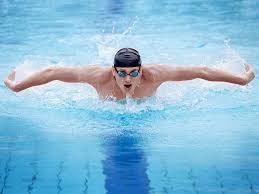Swimming is not just a recreational activity; it's a life skill that offers numerous health benefits and endless opportunities for enjoyment. Whether you're a beginner dipping your toes into the water for the first time or an experienced swimmer looking to refine your technique, mastering the art of swimming opens up a world of possibilities. In this essay, we'll explore the essential steps to becoming a proficient swimmer, from conquering fear to refining strokes.
To embark on your swimming journey, start by familiarizing yourself with the water. Overcoming any fear or apprehension is the first crucial step. Begin in shallow water where you can comfortably stand, gradually venturing deeper as you gain confidence. Practice floating on your back and stomach to develop a sense of buoyancy and relaxation in the water.
Once you feel comfortable in the water, it's time to learn the basic strokes. The most common strokes for beginners are the freestyle (front crawl) and the backstroke. The freestyle involves alternating arm movements with a flutter kick, while the backstroke utilizes a similar arm motion while floating on your back and kicking with a flutter or whip kick. Focus on maintaining a streamlined body position and rhythmic breathing to propel yourself smoothly through the water.
As you progress, you can explore more advanced strokes such as the breaststroke and butterfly. The breaststroke features a frog-like kick and simultaneous arm movements, while the butterfly involves a powerful dolphin kick and synchronous arm strokes. Mastering these strokes requires coordination, strength, and precise technique.
In addition to mastering individual strokes, developing efficient turns and starts is essential for competitive swimming. Practice flip turns or open turns depending on the event and focus on minimizing resistance and maximizing momentum during transitions. A strong start off the blocks or from the starting position can give you a competitive edge in races.
Beyond technique, building endurance and stamina is crucial for sustained performance in the water. Incorporate interval training, drills, and distance swims into your workouts to improve cardiovascular fitness and muscular strength. Consistent practice and gradual progression will help you build the stamina needed to swim longer distances and faster times.
While technique and fitness are essential components of swimming proficiency, don't overlook the importance of water safety. Learn basic water rescue skills, such as treading water and floating, and always swim in designated areas supervised by lifeguards. Respect your limits and never swim alone or in hazardous conditions.
In conclusion, mastering the art of swimming is a rewarding journey that offers physical, mental, and emotional benefits. By overcoming fear, learning proper technique, building endurance, and prioritizing water safety, you can become a proficient swimmer capable of enjoying all that the aquatic world has to offer. So dive in, embrace the water, and let your swimming journey begin.
Here's a guide on how to swim fast:
-
Technique Matters: Efficient technique is key to swimming fast. Focus on proper body position, streamlined form, and rhythmic breathing. Minimize drag by keeping your body aligned and your movements smooth.
-
Start Strong: A powerful start can set the tone for your entire race. Practice explosive dives and strong underwater kicks to propel yourself forward quickly off the blocks or from the starting position.
-
Work on Your Turns: Smooth and efficient turns can make a significant difference in your overall speed. Practice flip turns or open turns, depending on your event, to maintain momentum and minimize time lost during transitions.
-
Build Strength and Endurance: Improve your swimming speed by building strength and endurance through targeted dryland exercises and swim training. Focus on developing power in your legs and upper body to generate more force with each stroke.
-
Interval Training: Incorporate interval training into your workouts to improve your speed and stamina. Alternate between short bursts of high-intensity swimming and periods of rest or recovery to push your limits and increase your speed over time.
-
Focus on Stroke Efficiency: Efficient strokes are essential for swimming fast. Work on refining your technique for each stroke, whether it's freestyle, backstroke, breaststroke, or butterfly. Minimize resistance and maximize propulsion to swim faster with less effort.
-
Optimize Your Breathing: Proper breathing technique can help you maintain a steady pace and maximize oxygen intake during your swim. Practice rhythmic breathing patterns that sync with your stroke and minimize disruptions to your momentum.
-
Train Smart: Plan your training sessions strategically, incorporating a mix of speed work, endurance training, and technique drills. Gradually increase the intensity and duration of your workouts to challenge yourself and improve your speed over time.
-
Stay Relaxed: Tension and stress can slow you down in the water. Stay relaxed and focused during your races, maintaining a smooth and fluid motion with each stroke. Trust in your training and technique to carry you to victory.
-
Visualize Success: Mental preparation is just as important as physical training when it comes to swimming fast. Visualize yourself swimming confidently and effortlessly, achieving your goals and reaching the finish line ahead of the competition. Positive visualization can help boost your confidence and performance on race day.
By incorporating these tips into your training regimen and race strategy, you can improve your swimming speed and achieve your goals in the water. Remember to stay patient and consistent, and celebrate your progress along the way.
